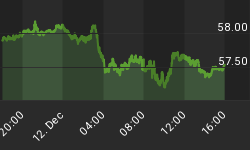We introduced the Credit Complacency Crash (CCC) Sub-Model in April. Two weeks ago, we said we would discuss more on sector allocation in May but we changed our mind. Instead, we will focus on the CCC Sub-Model as we have found more amazing results worth mentioning. Now that we can objectively predict all S&P 500 peaks since 1965, we successfully solved the next one million dollar question:
"Is it possible to precisely predict all S&P 500 troughs for the same period?". The answer is yes. You are probably very sceptic and we understand because we would if someone made such a large claim but I will quote Benjamin Graham: "We are neither right nor wrong because people agree with us. We are right because our reasoning is right and our data proves it". So, how did we solve this problem?
Any solution comes from using your wildest imagination. We will ask you this riddle: Which came first: the chicken or the egg? Before you start laughing at us profusely, did you think how this question relates to investing? Let's rephrase our riddle: Should an investor know when to buy, then when to sell or should an investor know when to sell, then when to buy? Now, this is more interesting, isn't it?
When confronted with such dilemma, a traditional investor would choose to find when to buy then find when to sell. An open minded investor would examine both paths. This is what we did. Now that we found possibly the greatest model to call peaks, wouldn't it make more sense to use it to call troughs? That's the choice we made. We are not saying the reverse is impossible but that's how we figured it out.
Now look below at our results. Red dots are CCC Sub-Model signals. By the way, we did a minor change on the CCC Sub-Model since April. All conditions are the same but we added a new condition: If a CCC signal occurs in a bull market (P>MA6), wait 6 months unless P<=MA6. Why? Because both Lending Cycle and Financing Cycle have 6 to 9 months lead on equities and we are closer to peaks that way.

Long red bars on the chart are obtained with this equation: Ef * P/Ef = Pf. The best way to find future levels is to closely estimate these two variables. Here are partial formulas in our Crash Level Sub-Model:
Earnings Forecast (Ef) @ Crash Signal
IF ( EXCESS = 1 ; E - ( 2 * Spread * E ) ;
(...)
ELSE ( E = Ef )
Price / Earnings Forecast (P/Ef) @ Crash Signal
IF ( AND ( P/E > 15 , OR ( Excess = 1 , Spread > 0 ) ; 15 ;
IF ( AND ( P/E > 15 , OR ( Excess = 0 , Spread <= 0 ) ; 12 ;
(...)
ELSE ( P/E = P/Ef)
You may ask us what is Excess and Spread but we will keep these criterions undisclosed because we want this model to remain private. To partially satisfy your curiosity, we can say publicly our Crash Level Sub-Model is based on four dimensions: 1) momentum (earnings), 2) valuation (P/E), 3) macro (inflation) and 4) behavioural (mean-reversion properties after herd behaviour). That's all we can reveal for now.
The accuracy of this model is quite high except in 2007 where the model estimated the S&P 500 would crash to 885.3 points and it felt to 666 points or nearly 25% lower than our predicted target. Is this a problem? Let's be fair, anybody who would have called a drop to 885.3 points when the S&P 500 was trading at 1503.4 points would have still made perhaps the greatest "imperfect" call of the decade!
| Date | Crash Signal | Crash Level | Trough |
| 30/06/1965 | 84.1 | 73.1 | 76.6 |
| 31/01/1969 | 103.0 | 73.9 | 72.7 |
| 31/08/1972 | 111.1 | 72.3 | 63.5 |
| 29/07/1977 | 98.9 | 93.7 | 87.0 |
| 31/07/1981 | 130.9 | 106.5 | 107.1 |
| 30/06/1987 | 304.0 | 239.6 | 230.3 |
| 29/09/2000 | 1436.5 | 838.9 | 815.3 |
| 29/06/2007 | 1503.4 | 885.3 | 735.1 |
Is there a way to buy distressed/undervalued equities near the trough? Yes. How? A simple quantitative method may be used in combo with our Crash Level. First, it would be required to add a buffer of either +5% or +10% (we did not test yet) over the Crash Level. Then all that is needed is to place a short term moving average with price. When price goes above the MA, then this would mark the final bottom.
Another way to buy distressed/undervalued equities near the trough are by qualitative means. Various signs may be observed near our Crash Level. One of them is the so called market capitulation. A market capitulation can be identified with the analysis of high volume days, significant price reversals, volatility, put/call ratios, market breath, 52W NYSE High - 52W NYSE Low and other various contrarian indicators.
To conclude, our Crash Level Sub-Model depends on the CCC Sub-Model to call precise S&P 500 troughs.
















